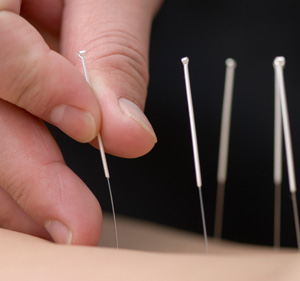Acupuncture treats the body as a whole not just the disease itself. It is used for over 10,000 years for diagnosis, prevention and treatment of various diseases.
The art of diagnosis, prevention and treatment of diseases has existed for over 10,000 years. Its origins are believed to be in India and China, but recent archeological findings attest practice acupuncture in the Carpathian-Danubian-Pontic. Since the ninth century BC in the area of clay character and biological arts figurines were produced. They were men or women and on their surface has similar holes needlestick corresponding to acupuncture points of traditional Chinese medicine. Over time it has been proven to be one of the most effective methods of prevention, treatment and cure of diseases.
Action
The human body has a dual character, being composed of sustainable energy matters. Energy imbalances in the body plan is manifested in material form of illness. Illness of body produces a chain reaction in the body, negatively influencing the function and structure of bodies that are directly connected. Acupuncture restores the structure and function of matter by restoring balance and harmonizing energy metabolic functions. The healing process is explained by the removal of internal and external causes that have supported and fueled the disease.
Combining acupuncture with phytotherapy can treat any disease. World Health Organization has identified more than 400 diseases that can be cured or treated by acupuncture.
Some of the problems successfully treated with acupuncture are: benign and malignant breast nodules, thyroid nodules, infertility, abnormal sexual dynamics – impotence, erection and frigidity, ovarian cysts, uterine fibroids, menstrual disorders, endometriosis, galactorrhea, prostate disease, kidney stones, renal cysts, gastroesophageal reflux, peptic ulcer, gastritis, enterocolitis, colitis, liver disease – hepatitis or cirrhosis in early stage bladder stones, diabetes type I and type II, pancreatitis, constipation, anal fissures, hemorrhoids, heart disease, cardiac arrhythmia, hypertension and hypotension, myocardial infarctions, cardiac asthma, pulmonary asthma, bronchitis, pneumonia, stroke, spinal cord and brain benign tumors, stress, low immunity, anxiety, depression, headaches, insomnia, neuralgia, shingles, epilepsy, intracranial hypertension, endocrine dysfunction on pituitary, thyroid and adrenal glands, obesity, discopathies, hernia, spondylosis, osteoporosis, rheumatism, osteoarthritis, vitiligo, pityriasis, psoriasis, warts, hirsutism, allergies dermal, allergic rhinitis, pharyngitis, laryngitis, sinusitis, ear infections, snoring, apnea, anemia, thrombophlebitis, arteritis.
Also, using acupuncture are obtained good results in the field of cosmetics and aesthetics: treatment of wrinkles, face lifts, breast toning, cellulite and stretch marks disappear. Another advantage of acupuncture is to keep and maintain the health of the body, thus preventing disease. In combination with other traditional therapies, acupuncture is used in treatment of reviving and rejuvenating the skin tissue.
Energy meridians and acupuncture points
The human body is crossed by 12 energy meridians and 2 pair of individual energy meridians. The existence of meridians and points has been proven by numerous medicine scientific studies developed by Quantum. By placing the body of contrast agents and monitoring of the human body have been identified the corresponding meridian pathways.
Each meridian controls every function and/or one organ. The meridian name was established based on them:
– Liver meridian
– Lung meridian
– Spleen-pancreas meridian
– Heart meridian
– Kidney meridian
– Stomach meridian
– Small intestine meridian
– Large intestine meridian
– Gall bladder meridian
– Bladder meridian
– Meridian three outbreaks – higher, middle and lower
– Ship-sex meridian
The two unpaired meridians are the governor and the conception meridian and are responsible for the maintenance and transmission of information from DNA and RNA.
The meridians on the skin are acupuncture points or acupoints. A point may act on several organs or functions in the body. By stimulating them to control and direct the energy flow in the body. Most of them are located along the meridians, but there are some acupoints located outside them. They are called extrameridiane points and their importance is much greater than the internal meridians that are linked and act directly on the body’s energy matrix. For each disease there is a pattern of blocking specific acupoints and there are several points that become active only when the body gets sick. Traditional Chinese Acupuncture has identified 365 acupoints, but some mention Tibetan treated a total of approximately 4,000 acupoints. Their surface is 2 mm square in the skin and in the shape of a truncated cone with a large base in skin depth. Can be stimulated by mechanical pressure, electricity, waves of light, heat or sound waves.
Inserting needles into skin is not painful because the needle is spherical and no nerve endings in the acupuncture point. During acupuncture the points begins to transmit a bidirectional flow of information: the body affected by energy flow to the brain, nervous system, where “control” of the affected organ to begin the healing process. On average an acupuncture session lasts 11 minutes.
Transmission of the information flow takes place throughout the acupuncture session and continues until next session. It is therefore important not to be discontinued, the brain coordinates the processes of healing according to the latest information received.
Acupuncture needles are made of copper, silver, gold, platinum and stainless steel.

